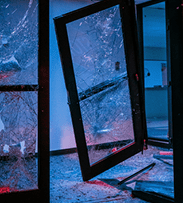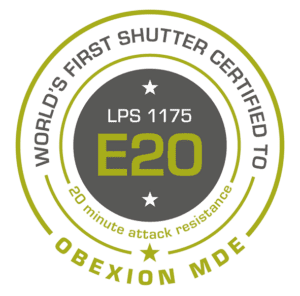In the case of secure roller shutters, anticipating threat-types to your property or premises is the first step in preventing damage and break-ins.
For example, attempted break-ins or opportunist attacks will usually rely on improvised weapons like wrenches, prybars and screwdrivers.
More professional, premeditated attacks on your premises might make use of powered tools, such as drills, cordless disc grinders or reciprocating saw.
Or if a property is of particularly high value, it may need to defend against professional grade tools.
Concrete disc cutters, cutting torches and pneumatic drills are all used in extreme cases of determined entry.
But how do you match defensive needs to a specific roller shutter product?
The SR Rating system devised by the (BRE) Building Research Establishment, takes these tool types, and uses them to test against a secure roller shutter’s defensive capabilities.
In doing so, this creates a measurable certification system for secure roller shutter products.
Depending on a product’s performance in what’s referred to as the LPS1175 test, it’s given a certification from SR2-SR5.
This means that if you know what tools you want to protect against, you can match it exactly to a certified product.
Each SR rating has its own applications, and a specific SR rating may be required depending on the structure it’s being installed on.
For example, you may find your property might be sufficiently protected with an SR2 rated shutter.
But if its critical infrastructure, an SR4 or above is likely to be a mandatory requirement.
Further information on how secure roller shutters can be used to protect against different tool types
Here at Obexion, we’ve published a completely free e-guide to  or premises.
or premises.
It covers all essential variables you should consider, from your sector, to physical location and the nature of what you’re protecting.
If you’d like to get in touch with the team here at Obexion directly, you can reach us via the contact page.
Alternatively, you can call us on 0845 050 8705.














